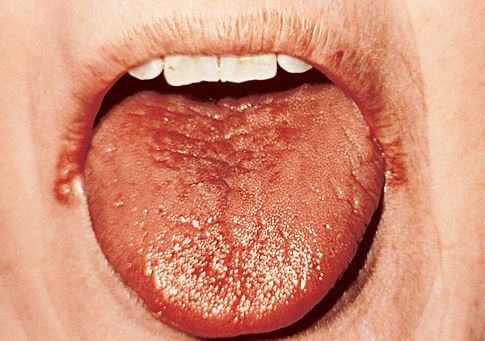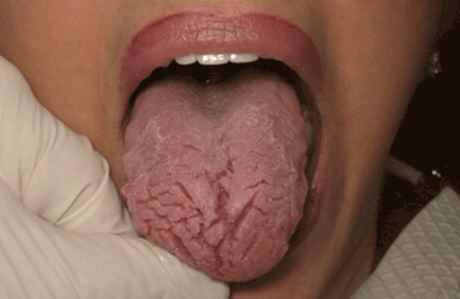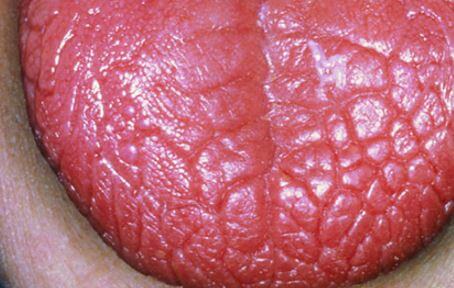What is Xerostomia?
Xerostomia is a symptom of unusual mouth dryness. This is usually related to changes in the chemical composition of the saliva, dehydration or hyposalivation due to some form of underlying mechanism in the salivary glands themselves. Primary care physicians are concerned with oral soft tissue and the teeth.
Anatomy & Physiology of Oral Mucosa
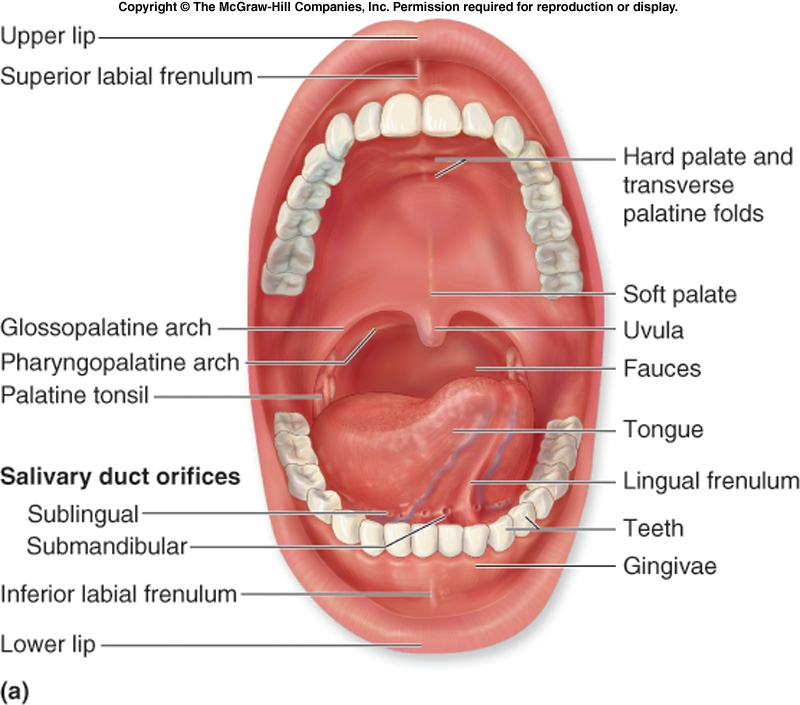
Knowledge of the oral cavity and its internal milieu are necessary to guide interventions that will prevent further episodes of xerostomia. Saliva is essential to oral health. Without saliva, impairments can be seen in the form of tooth decay, bacterial or fungal overgrowth, speech impairment and more.
The chemical composition of saliva which is mostly water and mucus is essential to maintain the environment necessary for good oral health. In xerostomia, alteration in the structures causes the dry mouth sensation and need to be identified so that proper xerostomia management can be initiated.
The saliva is also composed of a lot of antimicrobial agents such as lysozymes, oxidase and immunoglobulins that help keep the normal flora of the mouth in control, without these agents, opportunistic infections may arise such as in the case of immunodeficiency or HIV.
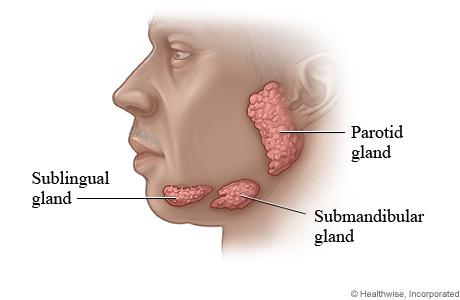
The saliva is produced by 3 glands, the sublingual, the parotid and the submandibular gland. Saliva is produced all the time, but is very high during autonomic stimulation such as eating or the thought of eating but low at other times. This is why swallowing is done unconsciously as excess saliva is swallowed when there is no food in the mouth.
Saliva is also excreted when there is something in the mouth such as a mouthful of food or a foreign object in an attempt to digest said object. These and all the above mentioned factors are necessary to promote good oral health along with a good helping of oral hygiene during tooth brushing.
Causes
The major causes of xerostomia are conditions that stem from low plasma volume (in the case of dehydration), hyposalivation, and radiation therapy to the salivary glands or blunt trauma that causes a blockage in the secretion of saliva. Numerous other glands are also present in the mouth that are responsible for producing saliva, once the saliva production falls below 50%, xerostomia develops.

Plasma volume is a good measurement of body water status. Once the plasma volume is decreased due to low water intake the body takes measures to conserve water. One is by decreasing urinary output. This diverts the water back to the body to maintain fluid osmolality.
Major causes of xerostomia are medications. Examples are drugs with anticholinergic properties such as Atropine, but also alpha and beta blockers. Other causes are chronic parotitis, Sjögren’s syndrome, salivary duct obstruction, diabetes, and HIV and radiation therapy to the salivary glands.

Anticholinergic drugs exert their effects by promoting sympathetic effects, stimulating receptors that suppress the parasympathetic response such as salivation in anticipation of a meal. Fight or flight responses take over and the body switches of anabolic processes in favor over rest and digest. Alpha and Beta blockers block more specific responses that include dryness of moth.
Chronic infection of the parotid glands can also lead to xerostomia. The inflammation of the parotid gland inhibits the glands from secreting mucus. Immune diseases like Sjögren’s syndrome exert their manifestations by damaging the glands through an immune response which in turn prevents them from secreting mucus.
Salivary duct obstruction from sialolithiasis (saliva duct stones) can be a cause for decrease in saliva production as well. Changes in the composition of the saliva may cause a formation of stone in the ducts of the saliva glands. This is not only painful; it causes swelling and discomfort during eating or speaking.
Diabetes causes an increase in blood serum osmolality due to the high load of sugar in the blood, this causes your body to urinate more in an attempt to get rid of the excess sugar, doing so makes the body lose a lot of plasma which in turn causes the salivary glands to decrease salivation in an attempt to conserve water.
HIV causes opportunistic infections to arise in the mouth and causes the internal milieu of the mouth to be disturbed. Bacterial or fungal overgrowth may occur and this impairs the glands from producing the saliva. Radiation causes damage to the cells by ionizing the molecular bonds of the cells and impairing their ability to create saliva.
Treatment
The aim of treatment to reduce the incidence of xerostomia is aimed at treating the underlying cause. Withdrawals of medications that cause the xerostomia are a first step. If withdrawn, the patient can expect xerostomia to resolve.
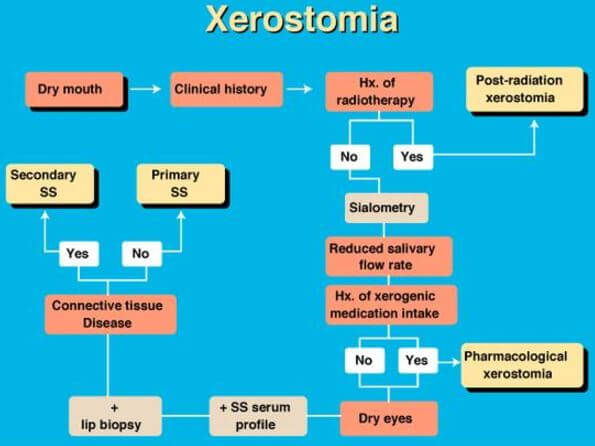
Infections can be treated with a course of antibiotics. Once the underlying cause is resolved you can expect the patient to recover his ability to make adequate amounts of saliva. In cases of immune disease, immunosuppressants can be given to stop the immune response.
Corticosteroids are a good form of immunosuppressant and can be used to effectively manage Sjögren’s syndrome and other immunocompromised disease states such as lupus.
For sialolithiasis, removal of the stone and treating the abnormality in formation of saliva can help resolve xerostomia. Diabetes can be treated by managing hyperglycemia and reducing the blood sugar levels allows the body to attain a normal degree of serum osmolality. Management of HIV and removal of radiation removes further insults to the internal milieu responsible for causing xerostomia.
Conclusion
Xerostomia is a fairly common complaint of patients in the outpatient department. Care must be taken to ensure that this is a manifestation of an underlying disease that requires immediate medical attention. There are a lot of causes and accurate diagnosis must be done before the proper treatment for xerostomia can begin.
Pictures
